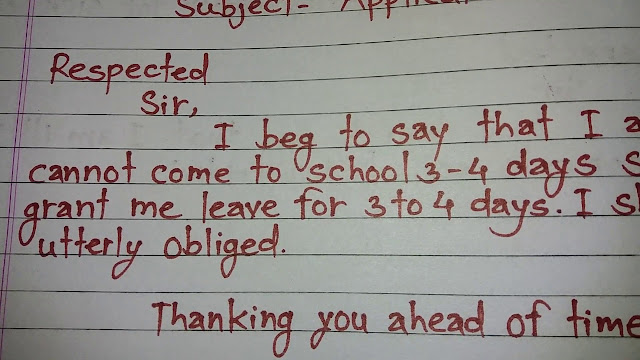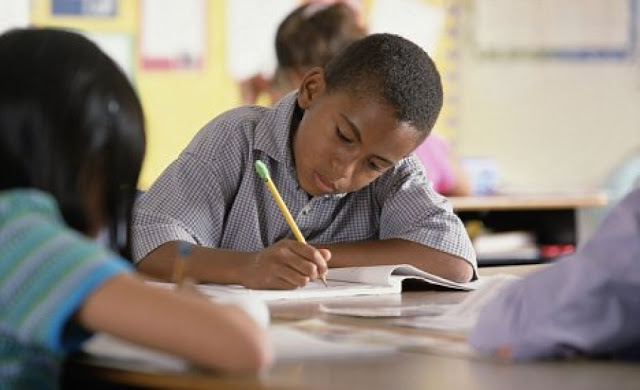8 Reasons we Must Teach Handwriting in Schools
The biggest controversy to take place in
the world of penmanship is happening right
now: A lot of persons are of the opinion that Handwriting will no longer
be taught in elementary schools. And things are getting pretty heated.
Where does your allegiance fall?
It's much more likely that
keyboarding will help students succeed in careers and in school than
handwriting. So instead of learning handwriting skill, kids might learn typing
skills. This of course sounds interesting, but in the real sense it is the worst
thing that will ever happen to our kids. In this blog post, I will love to
share with you reasons why skill must not be replaced with typing skills. As a
matter of fact, handwriting is even more important than it has ever been. Let’s
consider the following:
1. Poor spelling among kids
If you have not yet observed,
it is imperative that you confront kids who are tech savvy in any school.
Majority of them have problem spelling words correctly. This is as a result of
Microsoft Spell Check. This is not only affecting our kids, it is affecting
almost everyone. NOBODY knows how to spell without a computer anymore. This
makes it very important for additional spelling lessons to be added to the
curriculum.
2. Handwriting is the
foundation for every kid.
Learning to write is one of the
most important things that a child at primary school will learn. Children use
their writing in almost all other subjects of the curriculum. For a child,
learning to write can be a tricky business, not least because good writing
involves handwriting, spelling, grammar and punctuation not to mention what we
want to write and who we are writing for. Good writing also gives children a
voice to share their ideas with the world.
3.
Develops motor skills
Handwriting requires a very
different skill set from print writing. It involves using the hand muscles
in a different way. Additionally, it activates a different part of the brain
than regular writing does. At the age writing skill is taught, around 5 to 8
years old, these skills can be very beneficial in furthering motor skill
development.
4.
Reinforces learning
When students are taught the
English language in only one form, print writing, they get only one chance to
learn and memorize the letters. By having to learn cursive as well, students
get another opportunity to fully comprehend the alphabet. Learning cursive also
gives students a clearer understanding of how letters are formed, which will
improve their print writing as well.
5.
Working with legal documents
Being comfortable with
handwriting skills will guarantee that students will be confident when writing
and signing legal documentation. A cursive signature is most commonly required
to endorse legal documents, accompanied by a printed version of their name too.
Writing and signing checks is another reason for learning cursive. Cursive
writing has historically been the standard style when writing authorized checks
for payment. Students risk being confident and successful when working with
basic legal documents if they don’t learn cursive writing.
6.
Helps students with disabilities
Students with learning
disabilities, specifically dyslexia, can have a very hard time with writing in
print because many of the letters look similar, particularly b and d. Hand
written letters, however, look very different from print letters. This gives
dyslexic students another option—an option that can decrease their dyslexic
tendencies and make them more confident in their abilities.
7.
Cursive writing is a lot of art form
More and more school districts
are cutting art from their budgets. This can be detrimental to the full
development of students. However, handwriting skills could be considered an art
form all its own. It is one more way for students to develop the side of their
brain that is not developed by basic reading and writing skills. The more
diverse a teaching curriculum is, the better.
8.
Connects students to the past
Without being able to read
cursive writing, students will undoubtedly be kept from many opportunities to
read important documents. Think about it: so many historical documents are
written in cursive. While some of these documents are readily available online
in print form, not all of them are.
Finally,
Not only will students miss out
on a part of history, they may very well miss out on reading important letters
and cards from their grandparents or great-grandparents, too. Older generations
often still write in cursive on a daily basis, and kids often rely on their
parents to translate these letters and cards for them because they simply
cannot read the cursive writing. Forty years from now, when these grandparents
have passed on, kids may want to look back on these letters, and they should be
able to read them properly.
We cannot over emphasis the
need of creative handwriting in primary schools. Hence the need for
the upcoming Hand Writing competition. This will definitely enforce this
culture, and enable primary school teachers to be more effective as they teach
our kids.



Comments
Post a Comment